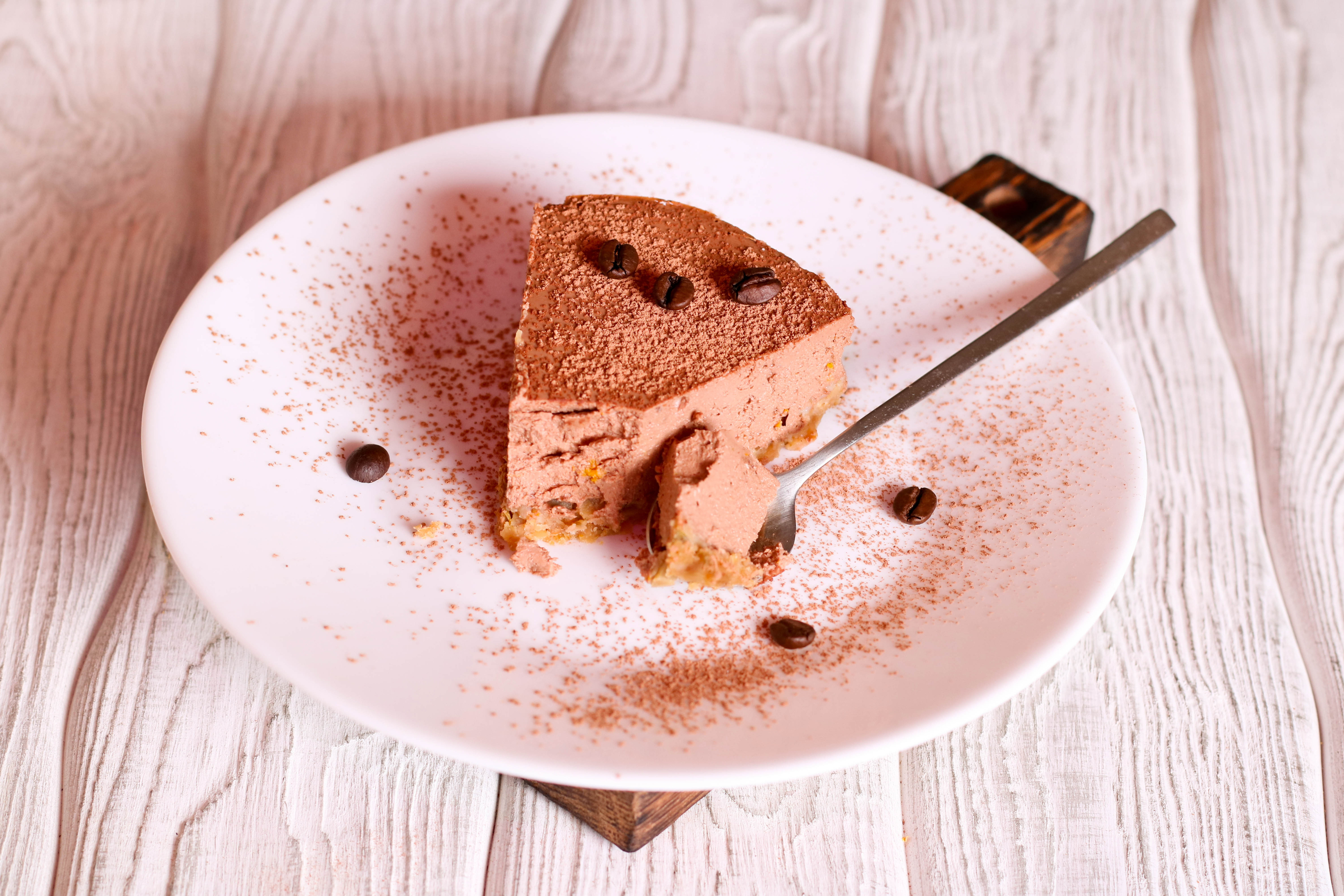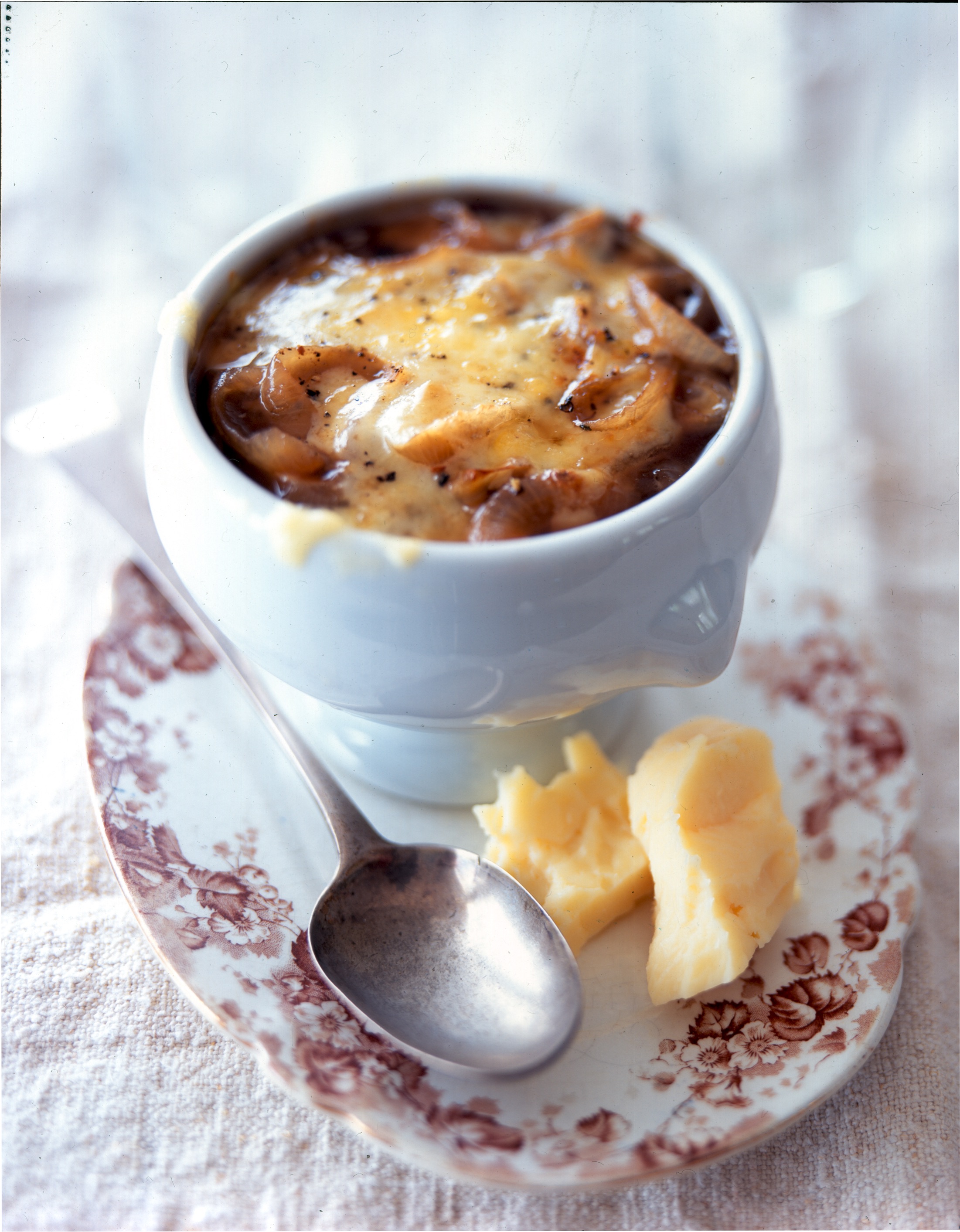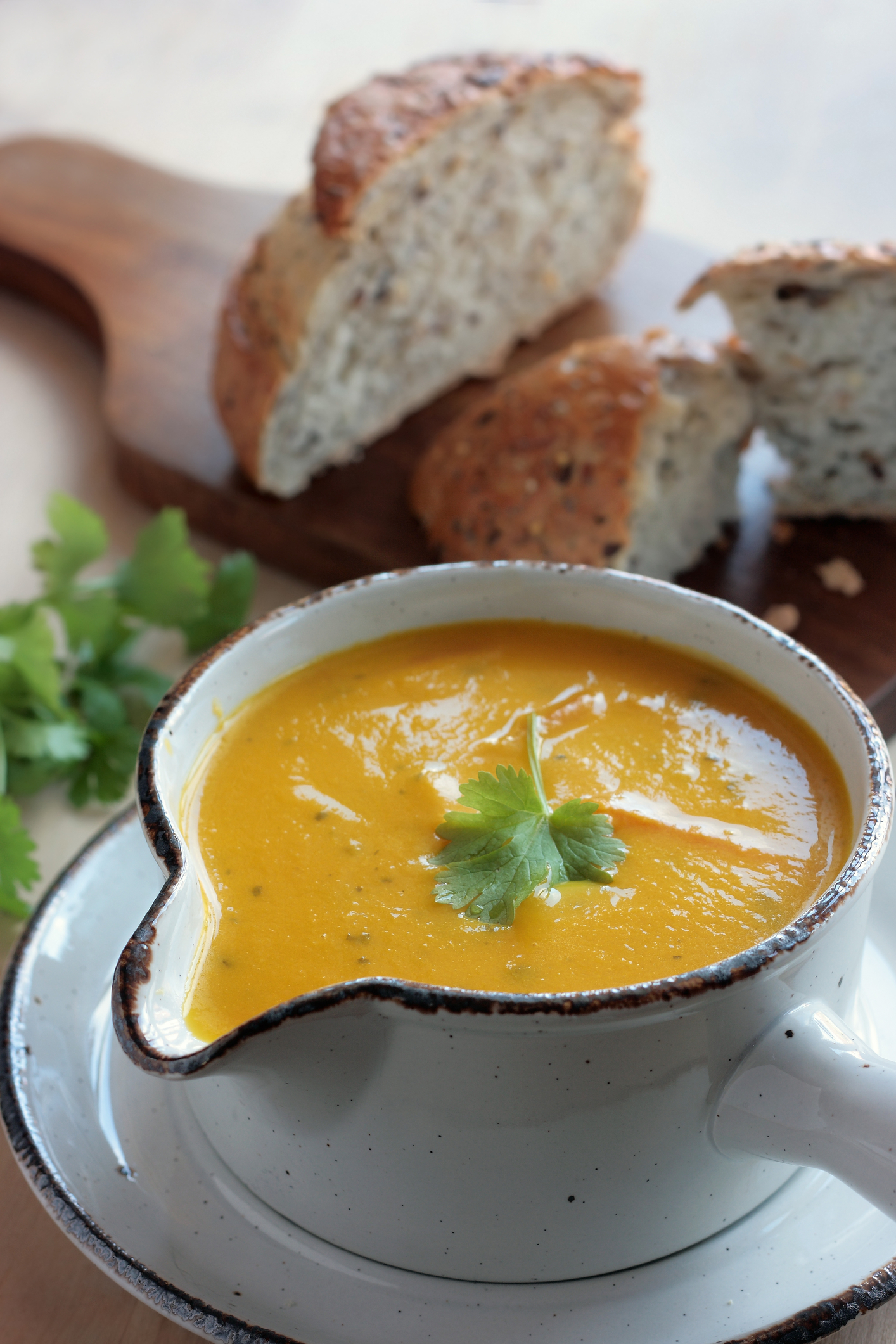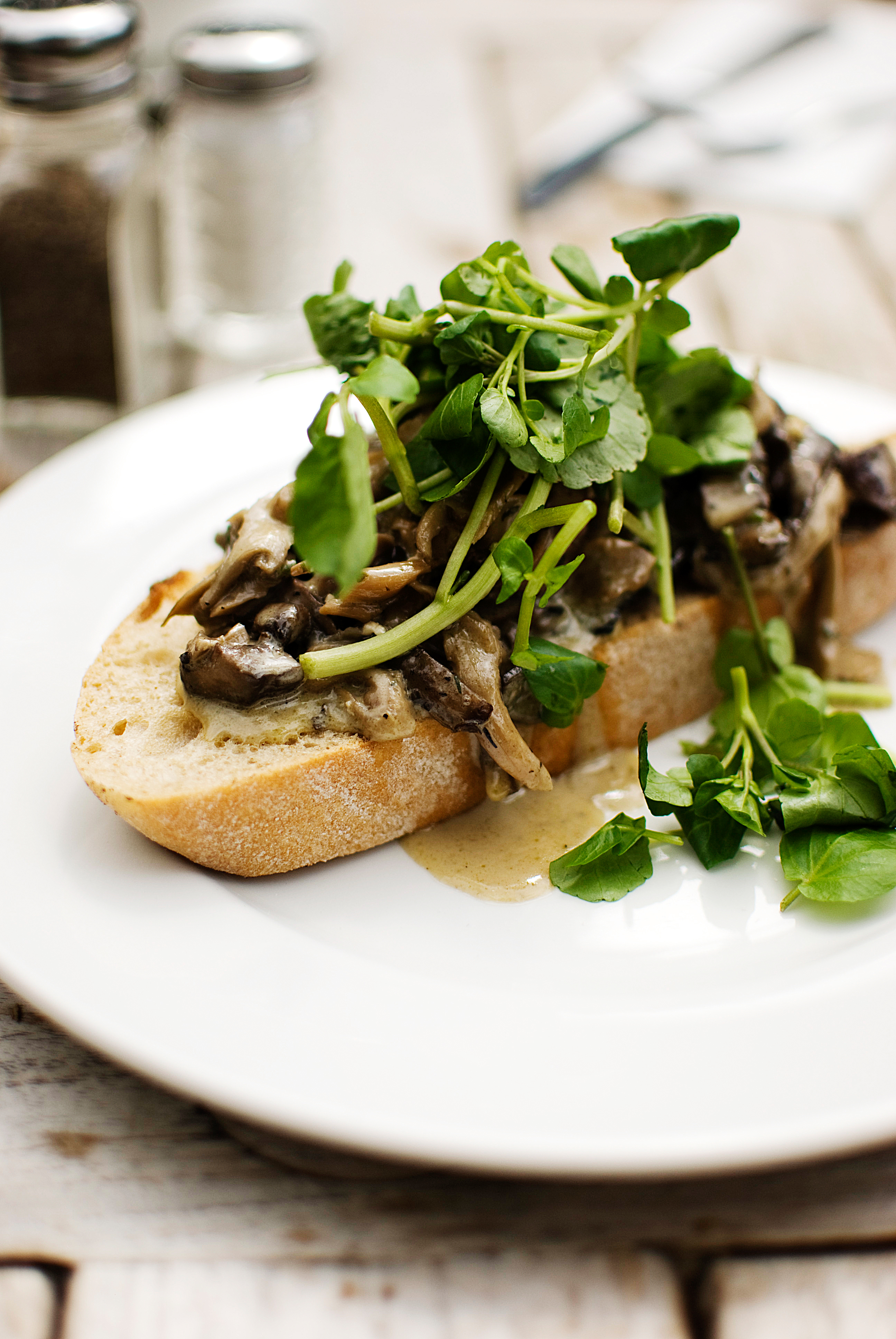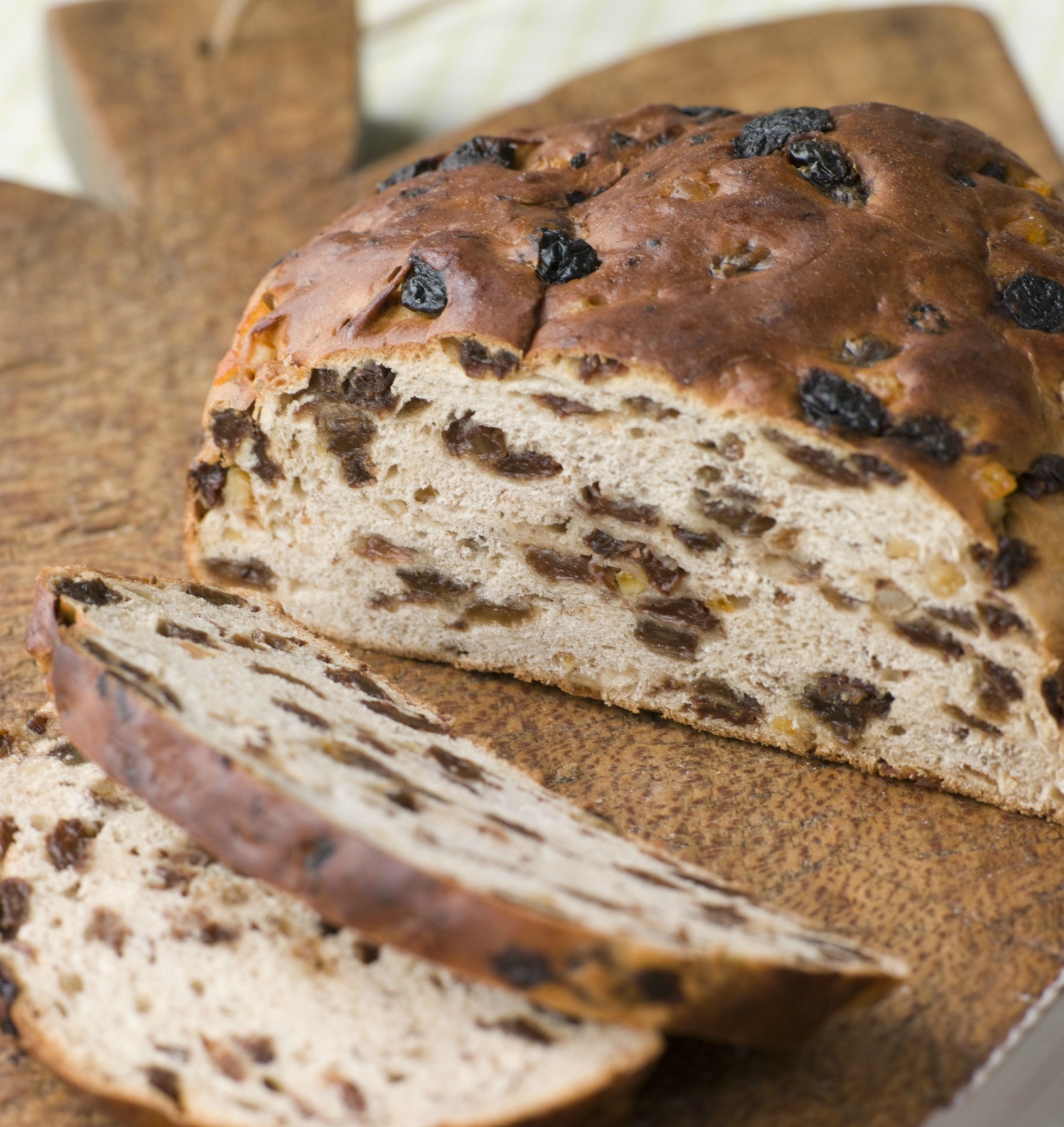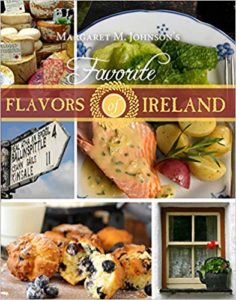 SERVES 14 TO 16
SERVES 14 TO 16
It’s that time of year again when thoughts turn to love—love and Champagne, hearts, flowers and, of course, chocolate.
Try this yummy Irish cream-laced chocolate cheesecake (made with Philadelphia cream cheese) for a delicious Valentine’s Day treat.
You’ll find other recipes like this in my Favorite Flavors of Ireland cookbook. To order, visit www.irishcook.com
Continue Reading
Onion soup is a surefire hit on anyone’s winter menu. Instead of using only yellow onions, this soup uses three — yellow, red, and shallots—adds Guinness to flavor the broth, and tops it with hearty, thick-cut croutons with melted blue cheese—Cashel Blue preferred! You can make the croutons ahead of time and store in an airtight container.
GUINNESS ONION SOUP WITH BLUE CHEESE CROUTONS
SERVES 8
Ingredients
Soup
- 2 tablespoons. unsalted butter
- 3 large yellow onions, peeled and sliced
- 2 large red onions, peeled and sliced
- 4 shallots, minced
- 1 garlic clove, minced
- 2 bay leaves
- 1 teaspoon dried basil
- 1 teaspoon dried thyme
- 1 tablespoon dark brown sugar
- 3 cups homemade beef stock or canned low-sodium beef broth
- 1 cup Guinness
- Salt and ground pepper to taste
Continue Reading
CREAMY CARROT-CLOVE SOUP
SERVES 6 TO 8
This is one of my all-time favorite soups, and with the chilly temperatures we’ve been having lately, it’s definitely time for another batch. The recipe has been in my soup repertoire since 1999 when it appeared in my first cookbook, “Irish Heritage Cookbook.” A few whole cloves add magic to it, and you can serve it “as is” or embellish it with Bacon Breadcrumbs (recipe follows), a later addition. For a thicker consistency add a chopped potato.
Continue Reading
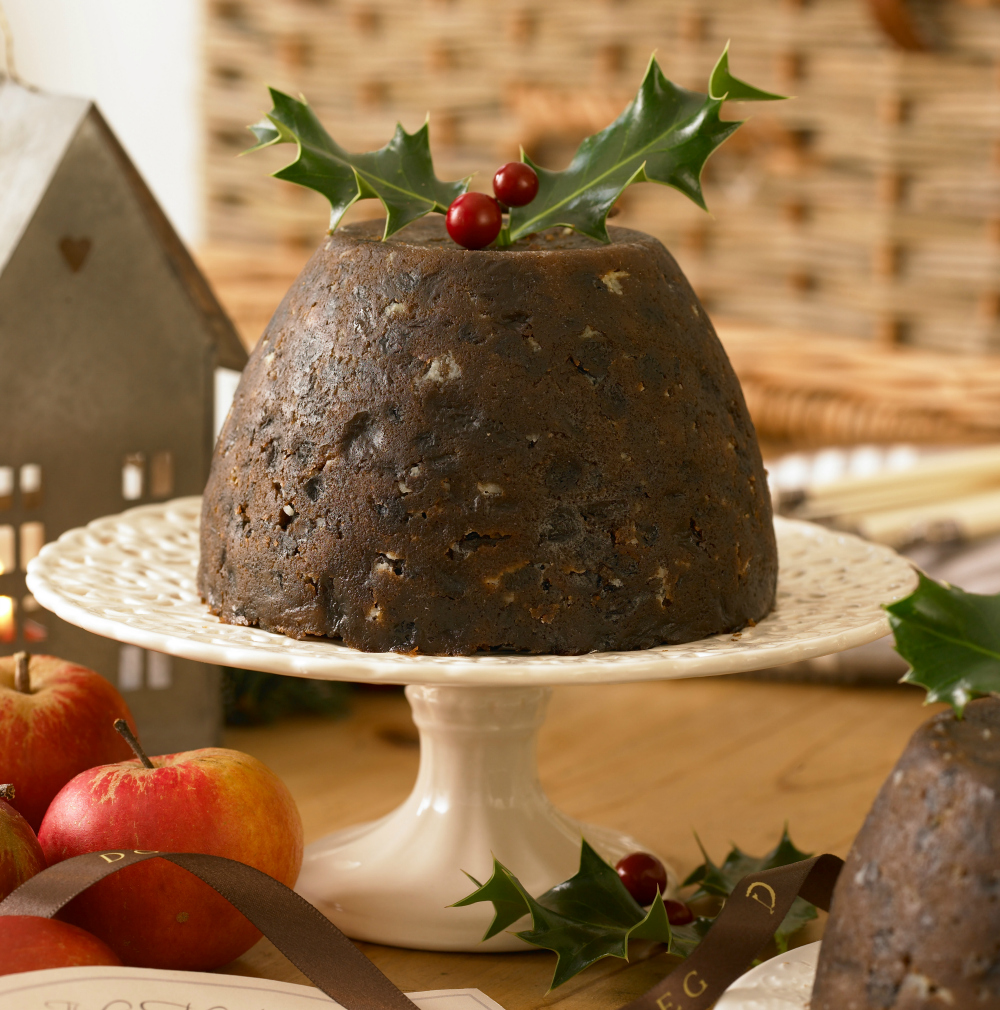
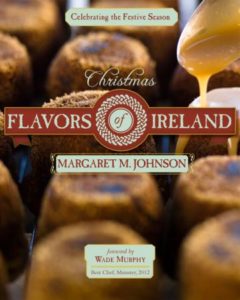 Often called “plum pudding”—despite the fact that it contains no plums whatsoever—steamed pudding was first recorded as “Christmas Pudding” in 1858 and later popularized in the carol “We Wish You a Merry Christmas.”
Often called “plum pudding”—despite the fact that it contains no plums whatsoever—steamed pudding was first recorded as “Christmas Pudding” in 1858 and later popularized in the carol “We Wish You a Merry Christmas.”
The name is probably derived from the substitution of raisins for dried plums as an ingredient in pies during medieval times. In the 16thand 17thcenturies, dishes made with raisins retained the term “plum,” and in the Victorian era, Christmas plum puddings became a well-loved dessert.
Curiously, plum pudding was a latecomer to Ireland, but it caught on quickly and replaced its plainer boiled pudding cousins; to this day it’s one of the most traditional of all Christmas dishes. Not to be confused with fruitcake, it’s actually more like a dense spice cake, and this recipe uses butter rather than the traditional suet.
Serve it warm with Brandy Hard Sauce. You’ll find more holiday recipes in my cookbook Christmas Flavors of Ireland; signed copies available on www.irishcook.com
Continue Reading
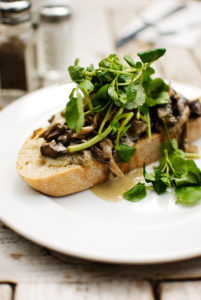 If you’re still looking to add an Irish “touch” to your American Thanksgiving meal, look no further than this delicious starter featuring Cashel Blue, Ireland’s first (and most delicious) blue cheese. This recipe comes from award-winning chef Kevin Dundon, proprietor of Dunbrody House in County Wexford, and is part of a collection of Cashel Blue recipes from Kerrygold, who now imports the cheese.
If you’re still looking to add an Irish “touch” to your American Thanksgiving meal, look no further than this delicious starter featuring Cashel Blue, Ireland’s first (and most delicious) blue cheese. This recipe comes from award-winning chef Kevin Dundon, proprietor of Dunbrody House in County Wexford, and is part of a collection of Cashel Blue recipes from Kerrygold, who now imports the cheese.
You’ll find other recipes featuring this cheese in my cookbook Favorite Flavors of Ireland; signed copies available at www.irishcook.com
WILD MUSHROOM-BLUE CHEESE TOASTIES
SERVES 6
Continue Reading
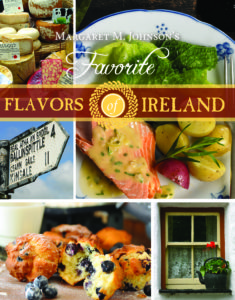 The ancient Celtic harvest feast called Samhain (pronounced SAH-win) marks the end of the harvest season and the beginning of winter, the “darker half” of the year. It’s celebrated on October 31-November 1, which is nearly halfway between the autumn equinox and the winter solstice.
The ancient Celtic harvest feast called Samhain (pronounced SAH-win) marks the end of the harvest season and the beginning of winter, the “darker half” of the year. It’s celebrated on October 31-November 1, which is nearly halfway between the autumn equinox and the winter solstice.
It was suggested in the late nineteenth century that it was the “Celtic New Year,” and over time, Samhain and All Saints’/All Souls’ Days merged to create our modern celebration of Halloween.
Several foods are traditionally eaten in Ireland at this time, especially Barmbrack, a yeast fruit bread. According to tradition, hidden in the Halloween Barmbrack were tokens to foretell the future — a ring for the bride-to- be, a thimble for the one who would never marry, and a small piece of cloth indicating the one who would be poor.
Continue Reading
/wp-content/uploads/2012/12/magnersham-229×300.jpg” alt=”Magner’s Glazed Ham” width=”229″ height=”300″ /> Magner’s Glazed Ham
You can probably tell that cookbook author Margaret Johnson is one of our favorite people. We’ve asked her for recipes many times, and she has come across with some tasty dishes every time. One of the reasons we go to her so often is that her recipes come right from the source: the cooks, chefs and bakers of Ireland.
To read Johnson’s cookbooks, you might think that this retired New England schoolteacher had been traveling to Ireland since she was knee-high to a butterfly, but in fact she didn’t make her first journey until she was 40. The trip, back in 1984, was a birthday present from her husband.
Johnson grew up in an Irish family, and her grandparents—her mother’s parents in particular, who came from Kerry—never forgot their roots. “That’s all they ever talked about, was the old country,” Johnson says, though she didn’t take it seriously as she might have.
She started to pay more attention later on in life, when she pursued a Ph.D. in English. “I took three or four doctrinal seminars in Irish literature. That was the turning point. I became obsessed.”
The trip to Ireland, on the other hand, was a revelation. “That was kind of like the jumping off point,” Johnson says. “After that, I kept looking for ways to reconnect. I thought about what I could do to keep this connection, and the answer was food.”
Nine cookbooks and more than 60 trips to Ireland later, Johnson has made that connection, and then some. Each book is part food, part travelogue, lavishly illustrated with photos, many of them her own. Her most recent cookbook (which we’ve mentioned before) is “Flavors of Ireland,” published by Ambassador International. Like all of her cookbooks, “Flavors of Ireland” draws on the relationships she has established and nurtured with Ireland’s top culinary artists.
When asked why so many cooks are so willing to share their recipes, Johnson explains: “I am a good correspondent. If I meet someone who has an inkling of an interest in contributing a recipe, I always keep in touch with that person.”
Of course, Johnson doesn’t develop those relationships with the sole intention of getting Ireland’s cooks to part with their recipes. Warm, lasting friendships have developed and blossomed over the years.
With frequent trips back to Ireland and the opportunity to spend each trip savoring the best food Ireland has to offer, you might say that Johnson’s one-time interest and now full-time passion seems like a dream job. She agrees.
“Without question, it really does. People ask, ‘Did you plan it this way?’ and I say, no, not really. I’ve always been a cook, always had an interest in food, and always had a passion for Ireland. I’ve just kept at it.”
Stay tuned for Johnson’s next cookbook, the “Christmas Flavors of Ireland,” coming out in mid-summer.
In the meantime, Johnson offers these two recipes sure to be big hits at your New Year’s dinner party. They’re from from Flavors of Ireland © 2012 Margaret M. Johnson.
MAGNER’S GLAZED HAM
Ingredients
One butt half (6 lb.), bone-in, fully cooked ham
12-15 whole cloves
2 cups Magner’s Irish Cider
4 tablespoons pineapple juice
2 tablespoons packed brown sugar
1 tablespoon of Lakeshire French Mustard or a similar brand
Instructions
- Preheat the oven to 325 degrees F. Score the ham in a diamond pattern, and stud with the cloves
- In a small bowl, combine the cider and pineapple juice. Place the ham, cut side down, on a rack in a large roasting pan. Pour the cider mixture over the top. Loosely cover the ham with foil, and bake for 1-½ hours.
- In a small bowl, combine the brown sugar and mustard. Mix 3-4 tablespoons of the cooking liquid with mustard mixture, and spoon it over the ham.
- Continue to cook, uncovered, basting frequently, for 30-40 minutes, or until an instant-read thermometer registers 160 degrees F. when inserted into the thickest part of the ham. Remove the ham to a platter or cutting board. Cover with foil, and let stand for 10-15 minutes or longer.
- To serve, cut the ham into slices.
KNAPPOGUE CASTLE LEMON CHEESECAKE
Ingredients
Filling
1 3-oz. package of lemon-flavored gelatin
1 cup boiling water
1 8-oz package of cream cheese, room temperature
1 cup granulated sugar
Zest of two lemons
Juice of 1 lemon
1 cup heavy (whipping) cream
1 8-oz container of plain yogurt
Fresh berries for serving (optional)
Crust
8 tablespoons salted Irish butter, melted
3 cups digestive biscuits or graham cracker crumbs
2 tablespoons granulated sugar
Instructions
- In a medium bowl, combine the butter, biscuit crumbs, and sugar. Press the mixture into the bottom and up the sides of a 10-inch springform pan. Refrigerate for about 30 minutes to firm the crust.
- In a small bowl, dissolve the gelatin in the water. Let cool until thick, but not set.
- In a large bowl, beat the cream cheese, sugar, lemon zest, and lemon juice with a mixer on high until smooth. Set aside.
- In a medium bowl, whip the cream with an electric mixer on high until stiff peaks form. Pour in the gelatin mixture and continue to mix until well blended. Fold in the yogurt and then fold in the cream cheese mixture. Pour over the crust, cover and refrigerate overnight, or until set.
- To serve, release the side of the pan, and cut the cake into slices. Top with fresh berries, if desired.
For additional info about Margaret Johnson and her many cookbooks and recipes, please visit her website, http://www.irishcook.com
And check out our related links for many more recipes from Margaret Johnson.

